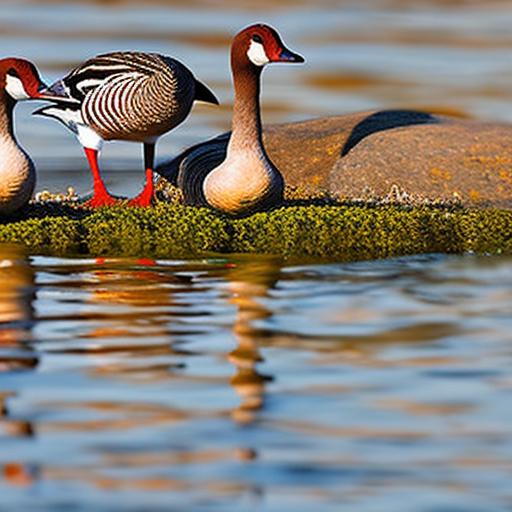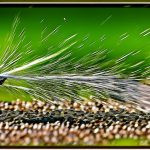Geese are known for their strong migratory instincts and their tendency to form large flocks. They are social birds that often travel in groups, and they are highly adaptable to a variety of environments. Geese are also known for their territorial behavior, especially during the breeding season. They can become aggressive and protective of their nesting sites, which can lead to conflicts with humans.
Geese are herbivores and primarily feed on grasses, grains, and aquatic plants. They are often found near bodies of water such as lakes, ponds, and rivers, where they can find ample food sources. Geese are also known for their loud honking calls, which they use to communicate with each other and to warn of potential threats.
Understanding the behavior of geese is crucial for effective management and deterrence. By knowing their habits and tendencies, it becomes easier to develop strategies for controlling their presence in certain areas.
Key Takeaways
- Geese are territorial and protective of their nesting areas, which can lead to aggressive behavior towards humans.
- Non-lethal methods for deterring geese include using visual deterrents, noise makers, and trained dogs to disrupt their behavior.
- Physical barriers such as fences, hedges, and netting can be effective in preventing geese from accessing certain areas.
- Repellents like taste aversions and scare tactics like decoys and predator calls can be used to discourage geese from frequenting specific locations.
- Professional geese control services can provide comprehensive management plans tailored to specific needs and environments.
- Creating a geese-friendly environment involves minimizing attractive food sources and providing alternative habitats for geese to nest and feed.
- Legal considerations for geese management include understanding local regulations and obtaining necessary permits for certain control methods.
Non-lethal Methods for Deterrence
When it comes to managing geese populations, non-lethal methods are often preferred as they are more humane and sustainable. One effective non-lethal method for deterring geese is the use of visual deterrents such as scarecrows, predator decoys, and reflective tape. These visual deterrents can create a sense of danger for the geese, causing them to avoid certain areas.
Another non-lethal method is the use of sound deterrents such as propane cannons, distress calls, and ultrasonic devices. These sound deterrents can disrupt the geese’s communication and cause them to feel threatened, leading them to seek out quieter and safer locations.
In addition to visual and sound deterrents, habitat modification can also be an effective non-lethal method for deterring geese. By altering the landscape to make it less attractive to geese, such as by installing barriers or removing food sources, it becomes less likely that they will frequent the area.
Creating Physical Barriers
Creating physical barriers is another effective method for managing geese populations. Fences and netting can be installed around bodies of water or other areas where geese tend to gather, preventing them from accessing these locations. These barriers can be particularly effective during the breeding season when geese are more territorial and protective of their nesting sites.
Another physical barrier that can be used to deter geese is the installation of vegetation buffers. By planting tall grasses or shrubs along the shoreline of bodies of water, it becomes more difficult for geese to access these areas, as they prefer open spaces where they can easily spot potential threats.
In addition to fences, netting, and vegetation buffers, the use of floating barriers on bodies of water can also be effective for deterring geese. These floating barriers create a physical barrier that prevents geese from accessing certain areas while still allowing other wildlife to move freely.
Implementing Repellents and Scare Tactics
In addition to physical barriers and non-lethal methods, the use of repellents and scare tactics can also be effective for managing geese populations. There are a variety of repellents available on the market that can be used to deter geese from certain areas. These repellents can be applied to grassy areas or bodies of water and work by creating an unpleasant taste or smell that deters geese from feeding in these locations.
Scare tactics such as motion-activated devices, lasers, and trained dogs can also be effective for deterring geese. These scare tactics create a sense of danger for the geese, causing them to avoid certain areas where they feel threatened.
It’s important to note that repellents and scare tactics should be used in conjunction with other management strategies for maximum effectiveness. By combining these methods with physical barriers and habitat modification, it becomes more difficult for geese to find suitable locations for feeding and nesting.
Utilizing Geese Control Services
For property owners and managers who are dealing with persistent geese problems, utilizing professional geese control services can be an effective solution. These services often employ a combination of non-lethal methods, physical barriers, and repellents to effectively manage geese populations.
Geese control services typically begin with a thorough assessment of the property to identify areas where geese are congregating and nesting. Based on this assessment, a customized management plan is developed to address the specific needs of the property.
In addition to implementing management strategies, geese control services also provide ongoing monitoring and maintenance to ensure that the geese population remains under control. This may include regular inspections, adjustments to management strategies, and education for property owners and managers on how to prevent future geese problems.
Building a Geese-Friendly Environment

In some cases, creating a geese-friendly environment can be an effective long-term solution for managing geese populations. This approach involves modifying the landscape to make it less attractive to geese while still providing suitable habitat for other wildlife.
One way to build a geese-friendly environment is by implementing landscaping practices that discourage geese from frequenting certain areas. This may include planting tall grasses or shrubs along shorelines, installing floating barriers on bodies of water, and removing food sources such as grass clippings or spilled birdseed.
Another approach is to create alternative habitat for geese in nearby locations where they are less likely to come into conflict with humans. This may involve creating designated feeding areas or nesting sites that are away from high-traffic areas.
By building a geese-friendly environment, it becomes possible to coexist with geese in a way that minimizes conflicts and promotes a healthy balance between wildlife and human activity.
Legal Considerations for Geese Management
When implementing geese management strategies, it’s important to consider the legal implications of these actions. In many areas, geese are protected under federal and state wildlife laws, which regulate how they can be managed and controlled.
Before implementing any management strategies, it’s important to research and understand the legal requirements for managing geese in your area. This may involve obtaining permits or approvals from wildlife agencies or local authorities before implementing certain management strategies.
It’s also important to consider the ethical implications of managing geese populations. While it may be necessary to implement management strategies to prevent conflicts with humans, it’s important to do so in a humane and responsible manner that minimizes harm to the geese.
By understanding the legal considerations for geese management, property owners and managers can ensure that they are in compliance with applicable laws while effectively managing geese populations on their property.
If you’re looking for ways to keep geese off your property, you may also be interested in learning more about breeding geese. Understanding the behavior and life cycle of geese can provide valuable insights into how to effectively manage their presence. Check out this article on the incubation period for goose eggs to gain a deeper understanding of these fascinating birds and how to coexist with them.
FAQs
What are some effective methods for keeping geese off your property?
Some effective methods for keeping geese off your property include using visual deterrents such as scarecrows or reflective tape, installing physical barriers like fences or netting, using noise deterrents such as ultrasonic devices or noise-making devices, and employing natural deterrents like planting tall grasses or using predator decoys.
Are there any non-lethal methods for keeping geese away?
Yes, there are several non-lethal methods for keeping geese away from your property. These include using visual deterrents, physical barriers, noise deterrents, and natural deterrents. It’s important to note that geese are protected under the Migratory Bird Treaty Act, so it is illegal to harm or kill them without a permit.
What are some natural deterrents for keeping geese off your property?
Some natural deterrents for keeping geese off your property include planting tall grasses or shrubs, using predator decoys such as fake coyotes or owls, and creating uneven or sloped terrain to make it less appealing for geese to land and graze.
Are there any legal considerations when trying to keep geese off your property?
Yes, there are legal considerations when trying to keep geese off your property. Geese are protected under the Migratory Bird Treaty Act, so it is illegal to harm or kill them without a permit. It’s important to research and understand the laws and regulations in your area before implementing any deterrent methods.
What are some common mistakes to avoid when trying to keep geese off your property?
Some common mistakes to avoid when trying to keep geese off your property include using illegal or harmful methods, not considering the long-term effectiveness of deterrents, and not addressing the root cause of the geese presence, such as a nearby food source or water source. It’s important to use humane and effective methods while also addressing the underlying reasons for the geese’s presence.
Meet Walter, the feathered-friend fanatic of Florida! Nestled in the sunshine state, Walter struts through life with his feathered companions, clucking his way to happiness. With a coop that’s fancier than a five-star hotel, he’s the Don Juan of the chicken world. When he’s not teaching his hens to do the cha-cha, you’ll find him in a heated debate with his prized rooster, Sir Clucks-a-Lot. Walter’s poultry passion is no yolk; he’s the sunny-side-up guy you never knew you needed in your flock of friends!







